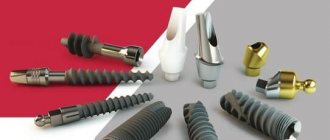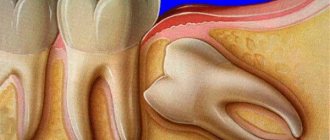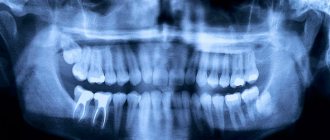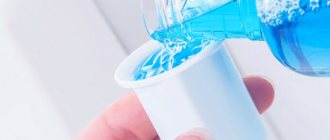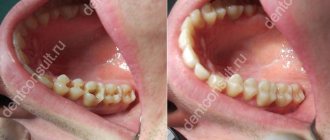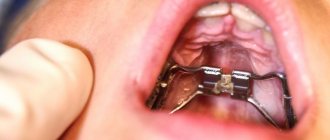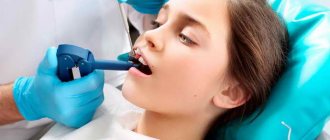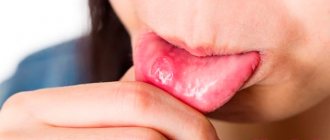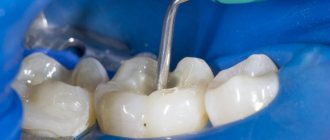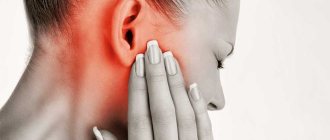In this article we will look at the reasons for increased tooth sensitivity after filling.
Toothache is always scary. Obviously, if a person has a toothache, this means that a serious inflammatory process is occurring inside. But what happens is that teeth can ache even if they are outwardly healthy. People experience a sharp toothache when eating hot, sour or cold foods, as well as after filling or salty foods. In this case, they usually say that a person has increased tooth sensitivity. People eat food every day, and such a factor as sensitivity can significantly poison life. We will talk further about what should be done in such a case.
Causes of sensitivity
Why does tooth sensitivity occur after filling?
Filling is a complex process during which the doctor does the following:
- First, it cleans the crown cavity from particles of tissue that are damaged by caries, periodontitis or pulpitis.
- Next, the cavity is dried before applying the adhesive.
- Only after this the dentist places filling material in the prepared area.
- First of all, pain varies greatly. It can be expressed in the form of tooth sensitivity to cold, hot or sour, and, in addition, it can be sharp or aching.
- In addition, pain may occur two hours after completion of treatment, and may appear within a day.
But even in cases where each stage of filling is carried out in compliance with all technologies, no one can be immune from the fact that after some time the teeth will not begin to ache or other characteristic pain will arise. So, why did sensitivity increase after dental treatment? This question cannot be answered unambiguously:
Tooth sensitivity after filling may manifest itself as pain when pressed.
The mechanism of hypersensitivity
The scientific name for excessive sensitivity is hyperesthesia. This disease is characterized by thinning of the enamel. As a result, irritating substances penetrate into the dentin (inner layer), and from there, through microscopic dentinal tubules, they reach the pulp (neurovascular bundle).
Pain appears on:
- temperature stimuli: cold, hot;
- chemical factors: spicy, salty, sour, sweet.
Moderate pain that subsides after the filling is installed is normal.
Additional Information! Direct thinning of the enamel is not enough for the development of hyperesthesia. The pathology is characterized by a change in the structure of dentin, a violation of the speed of fluid movement along the dentinal tubules.
Causes of pressure sensitivity
Increased sensitivity, which increases when pressed during chewing, is usually caused by the following two reasons:
The reasons for tooth sensitivity after filling should be determined by a doctor.
In the first case, the endings of the nerves that are located in the surface layer of dentin may be irritated. Sometimes this leads to their death, which can, in turn, cause inflammation of the pulp, causing increased tooth sensitivity.
Insufficient drying ultimately also leads to irritation of the nerve endings, although in this case the mechanism of pain is more complex.
Tooth sensitivity after filling may result in severe pain.
Sensitivity of teeth to cold and hot
Painful symptoms when eating cold or hot food are the first sign of hyperesthesia.
In this case, we are talking about the first degree of hypersensitivity, which can be caused by thinning of tooth enamel or more serious diseases, for example, caries. Therefore, you should not put off visiting the dentist.
For minor problems, he will recommend effective home remedies to reduce sensitivity. And if there is a disease, he will provide adequate dental treatment.
Causes of acute pain
The occurrence of acute toothache after filling, sometimes pulsating, is observed with pulpitis. This can occur due to errors during treatment. Especially when the doctor performs poor cleaning of the dental cavity. Even the smallest, sometimes invisible particles of the affected tissue can lead to inflammation and cause pulpitis.
Solutions to the problem
If a reaction to sweets often occurs, qualified treatment is necessary. Its type depends on the reason:
- In case of caries, it is necessary to remove the affected tissue, seal the cavity and restore the coronal part with a filling.
- If hyperesthesia or microcracks are a factor, procedures are carried out aimed at strengthening the enamel: fluoridation, remineralization, fluoride varnish coating, and physiotherapy.
- To eliminate the consequences of incorrect treatment, you need to visit the dentist again.
- In each case, gels, pastes and rinses are additionally prescribed to reduce sensitivity.
Only a doctor can determine the cause of the teeth’s reaction to sweets.
Important! It is impossible to independently determine the cause of a reaction to sweets. Only a specialist can determine what exactly caused the problem and prescribe the correct treatment.
The reaction of teeth to sweets is just a symptom of one of the diseases of the enamel or gums. As a preventive measure, general hygiene recommendations are used: clean and rinse the mouth after each meal, replace confectionery products with fruits, undergo regular dental checkups and promptly eliminate emerging problems.
Causes of periodic pain
Periodic pain can occur a day after treatment and is usually short-lived, for example, it is observed during chewing and disappears after the direct impact on the tooth is completed. This indicates that the person has chronic pulpitis. The reasons for its occurrence also lie in the mistakes made by the doctor during therapy. But, besides this, sometimes teeth hurt after complex treatment, which is natural, since any therapy is a kind of minor injury.
How to reduce tooth sensitivity after filling?
How to behave after treatment
To ensure that recovery after root canal filling is quick and painless, it is important to take some precautions and follow your doctor’s recommendations. The most important thing is to reduce the impact on the treated tooth and monitor oral hygiene. So the preventive measures will be as follows:
- in the first 3-5 days, eat only warm food, refusing hot or cold,
- It’s also worth forgetting for a while about sweets and too hard foods (nuts, seeds, crackers, etc.),
- dress according to the weather, avoid hypothermia,
- quit smoking and alcohol,
- Maintain oral hygiene: brush your teeth with a soft-bristled brush, avoid whitening toothpastes, and rinse your mouth with a special solution after eating.
Versatile First Aid Options
What should a person do if his tooth hurts after filling, but it’s late and there’s no way to go to the dentist? In such a situation, folk methods will come to the rescue. The easiest way is to take painkillers. But this is far from the best solution, since they only relieve pain for a short time, without eliminating the causes of its occurrence.
These recommendations will help with gum sensitivity after tooth filling.
But if home remedies do not help, and the tooth hurts for one or even two weeks after filling, then you should definitely consult a doctor for an examination and the necessary treatment.
Symptoms and treatment
If the temperature exceeds 38 degrees, and the general condition worsens, then you need to urgently go to the dental clinic. If the temperature is below 38 degrees and the condition is tolerable, then you can wait 1-2 days to monitor the symptoms. It is necessary to visit a dentist if:
- • high fever began;
- • dizziness and loss of consciousness are observed;
- • lymph nodes have enlarged;
- • swelling of the gums, cheeks, and throat has begun;
- • the gums turned red and there was severe pain.
During an urgent visit, the dentist will examine the oral cavity. If necessary, he will prescribe other diagnostic methods (x-rays) to accurately determine the cause of the increase in body temperature. Once the cause is determined, treatment will be prescribed.
If the temperature is not high, but it prevents you from doing important things, then you can try to bring it down using traditional methods or antipyretics. To lower the temperature, you can prepare a decoction of rose hips, chamomile or tea with honey.
In the first days after tooth extraction, your body temperature may rise. If this symptom is not accompanied by others, then it is recommended to rest, get enough sleep and monitor your well-being and the condition of the oral cavity for several days.
Advice from dentists when pain occurs when pressing
If, after a filling procedure, a tooth hurts during pressure, this is most likely due to the treatment of periodontitis resulting from pulpitis. The cause of tooth sensitivity after a filling when biting can also be incorrect installation of the filling in the root canal during treatment. Periodontitis is a complex disease. Dentists recommend treating this symptom in several stages:
What may cause fever after dental treatment?
There is a set of rules and advice that patients should adhere to after filling the canals and dental cavity:
- give up alcohol and cigarettes;
- do not eat hot or cold food;
- give up sweet and sticky foods;
- eat soft and liquid foods;
- For the first 2 weeks after the procedure, do not chew on the healed tooth.
Within a few days after the filling procedure, you will be able to lead your previous lifestyle. And don’t forget that timely visit to the dentist allows you to get rid of unpleasant surprises with your teeth.
It is strictly forbidden to:
- making injections into the gum area yourself is the work of a specialist;
- warm the affected area - these manipulations will only do harm - high temperatures contribute to the further spread of inflammation and the development of an abscess;
- do not resort to dubious traditional methods of treatment, such as applying garlic, which can cause severe burns;
- Do not try to get the filling yourself, this can significantly aggravate the situation. It's better to trust the doctor;
Sometimes, if the clinical picture requires it, treatment occurs in several stages. At the first stage, the doctor cleans the tooth cavity and puts a drug inside, which should either kill microbes, or stop inflammation, or help regenerate dentin.
In some cases, a special paste is placed into the canals, which kills the nerve so that the canal can be filled. To avoid exposing the exposed tooth to germs and food, dentists seal it with a temporary filling. The patient must walk with it until the next appointment, and during this period he may experience pain.
The most common fear of a patient with this problem is having the tooth re-drilled. However, in some situations such intervention is not required. In some situations, physiotherapy will be sufficient, for example, if dentin is damaged during drying.
If the cause of pain is an excessively protruding filling, the doctor will perform a correction by removing the interfering area.
In case of allergies, it is important to find out which component caused the reaction and replace either the filling or the structure that produces galvanic current.
Since baby teeth are somewhat different in structure from permanent teeth (they have thinner enamel and dentine layers, a larger pulp chamber, enamel wears out faster, etc.), and also have a relatively short lifespan, dental treatment in children has a number of features. Since the enamel wears off quickly, the filling material is not too hard so that over time the filling does not destroy the walls of the teeth and does not protrude beyond the edges of the tooth, interfering with normal chewing.
if the infection has affected only the enamel, it is possible to carry out remineralization therapy or treat caries using Icon technology, which involves the use of a special composite material that reliably closes and seals the carious cavity. However, it must be taken into account that this technology is not recommended for use in children under 3 years of age and cannot be used for cervical caries.
We invite you to read: Ultrasonic teeth cleaning - price, reviews, contraindications, before and after photos
In cases where the replacement of milk teeth with permanent ones is still far away, and the dental tissues are already thoroughly destroyed or the tooth needs to be removed, special children's prosthetics are used using crowns without grinding.
Despite the fact that modern dentistry practices exclusively painless dental treatment for children, not every child is ready to trust a doctor. Moreover, the younger the child, the more difficult it is to negotiate with him and convince him to open his mouth in the dental chair. Experienced doctors have long known how to prepare a child for dental treatment:
- The use of distracting elements: bright design of the office, the presence of a TV, an unusual robe at the dentist, toys - all this helps to distract the baby, divert his attention from the upcoming procedure and give him time to calm down.
- Use of colored fillings: when a child has the opportunity to independently choose the color of the filling, treatment procedures can easily be turned into a game.
- Presence of parents: often the presence of parents in the office significantly calms the baby and sets him up to cooperate with the doctor.
- Application anesthesia: pre-treatment with a special anesthetic gel before anesthetic injection and further procedures eliminates any painful sensations.
If the baby still does not cooperate, and treatment is necessary, you can offer parents the option of having all dental procedures performed under anesthesia or intravenous sedation. In a good clinic, these methods are absolutely safe for the child’s body.
Sometimes after dental treatment, the child’s temperature rises, and the parents immediately panic. In fact, its increase may be explained by the fact that the baby was worried in the doctor’s office or by the body’s individual reactions to the intervention. If after a few hours the temperature drops on its own, there is no reason to worry. If it remains stable at high values, it is better to consult a doctor.
The most common options are:
- If the dental procedure was complex (for example, it involved root canal cleaning), an increased (usually slightly) temperature may be a natural reaction of the body to the intervention.
- An infectious complication appeared. Unfortunately, this scenario is not uncommon in the treatment of purulent periodontitis, especially if there is a cyst or granuloma in the area of the apex of the tooth root. In addition, the addition of an infection may be a consequence of the patient’s violation of the doctor’s recommendations, as well as the result of incorrect or incomplete treatment.
- The problem can be triggered by the strong anxiety that some patients experience before dental surgery.
- Finally, a visit to the dentist could simply coincide with the onset of an acute respiratory viral infection or other disease.
If it does not exceed 38 degrees, and the general condition has not deteriorated much, you can delay contacting the dentist for 2-3 days. If during this period the condition does not return to normal, it is still worth seeing a doctor. A visit to a specialist should be urgent if:
- high fever;
- there is a loss of strength, headache, enlargement of regional lymph nodes;
- swelling of the gums or cheeks has begun;
- severe pain appeared in the area of the treated tooth;
- The gums were very red.
The dentist will conduct an examination and (if necessary) use additional diagnostic methods to accurately determine the reasons for the increase in temperature. After this, if indicated, procedures will be prescribed that will help stop the spread of infection and normalize the patient’s condition.
Dentists' tips for eliminating sensitivity
If all therapy is performed correctly, but the teeth hurt after filling, this means that a residual infectious reaction has appeared in the root area. This is normal, although not very pleasant. To cope with this pain, according to dentists, the following will help:
Many people are interested in how to reduce tooth sensitivity after treatment.
The mechanism of development of hyperesthesia
Increased sensitivity of teeth to temperature, tastes or tactile stimuli develops due to thinning of the enamel. It can become thinner for various reasons listed above.
In most cases, pain is observed in the cervical region.
Thinning enamel can no longer protect the dentin layer, which contains nerve endings, so a person begins to experience pain from any sufficiently strong impact, including temperature changes or even eating sweets.
Recommendations from dentists for relieving aching effects
If after therapy a person’s tooth aches, then, according to experts, the following treatment methods can calm him down. Eg,
Preventing tooth sensitivity
In order not to ruin your life with excessive tooth sensitivity, you must adhere to the following tips:
Thus, provided that all the above recommendations are followed, it will be possible to avoid the development of tooth sensitivity after filling.
Postoperative actions to prevent complications
Dental problems are a consequence of improper oral care and many other factors. To prevent tooth decay you need to:
- • monitor oral hygiene, brush your teeth 2 times a day;
- • adjust your diet, eat more fresh vegetables, fruits, herbs, dairy products;
- • reduce sugar intake;
- • get rid of bad habits: smoking, alcohol;
- • visit the dentist 2 times a year.
To speed up wound healing and prevent the development of inflammation and fever, you must follow the following recommendations:
- do not rinse your mouth on the first day after surgery so as not to remove the blood clot; treat the wound with an antiseptic (applications from Rotokan are suitable); Carry out regular hygiene procedures: brush your teeth, rinse your mouth after each meal; competently use folk remedies: calendula, chamomile, St. John's wort, sage; use traditional medicine not instead of, but in parallel with medication.
follow all doctor's orders; drink antipyretics recommended by your doctor; if after three days the fever does not go away, then listen to your body - perhaps it is caused by a cold, so you need to see a therapist.
Important: tooth extraction is a serious stress that weakens the body, so during the recovery period there is a possibility of colds or exacerbation of chronic diseases.
On the first day after surgery, you should avoid hypothermia and overheating, do not steam, or take a hot bath.
You need to avoid contact with people who have a cold, stay away from drafts, and don’t overwork yourself. You can only eat soft foods. It is forbidden to drink alcohol or eat hot seasonings: mustard, adjika, etc.
If these recommendations are not followed, complications may develop, even if the tooth extraction was not classified as complex.
One of the most common complications is alveolitis, an inflammation involving soft tissue. Alveolitis can turn into pulpitis.
In this case, the infection penetrates the vessels and reaches the bone, which is fraught with the development of osteomyelitis. All these ailments are accompanied by high fever.
During tooth extraction, perforation of the maxillary sinus floor may occur. The cause of this complication will be the proximity of the roots of the extracted tooth to the sinus or extensive cystosis.
With perforation, the temperature rises the next day and is accompanied by bloody discharge. If this complication is not treated, sinusitis will develop.
